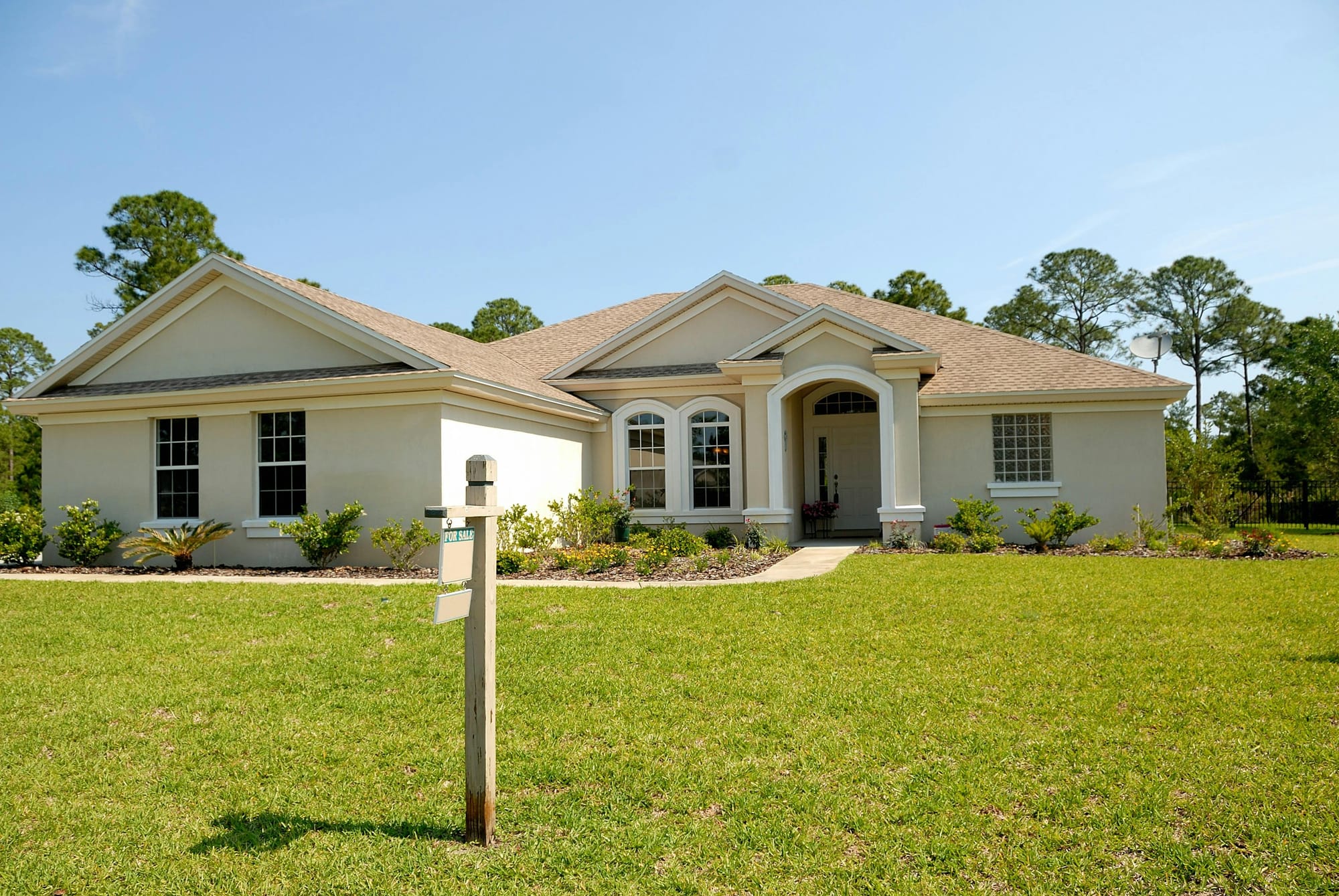Since 1960, the number of households in the United States has more than doubled from 53 million to over 131 million in 2023. On average, a family in the United States consists of 3.13 people. There are currently 84.2 million families in the country.
Finding the perfect place to raise a family is a journey that involves considering various factors, from the quality of schools to the availability of parks and community amenities. Each family's needs and preferences are unique, and the right location can significantly enhance the quality of life and opportunities for growth and happiness.
Here, we explore the best places to live in the United States for families, highlighting top destinations and considerations to help you make an informed decision.
Get A Free Mortgage QuoteBest Places to Live in the United States for Families
Here are the top five best places to live in the United States for families:
1. Austin, Texas
- City Population: 1,002,397
- Median Home Price: $487,981
- Median Monthly Rent: $1,716
- Median Age: 36 years old
- Median Household Income: $98,483
- Unemployment Rate: 4.31%
Living in Austin, TX
Austin offers a vibrant outdoor lifestyle with a downtown area organized in a grid pattern for easy navigation. The city has experienced a surge in high-rise residential and commercial developments, enhancing its modern urban feel.
Activities and Attractions
Austin provides a wide range of activities for families:
- Lady Bird Lake: Ideal for canoeing, kayaking, and stand-up paddleboarding, with a 10-mile hike and bike trail alongside it.
- Zilker Metropolitan Park: Features Barton Springs Pool, Zilker Botanical Gardens, Austin Nature and Science Center, and the Umlauf Sculpture Garden and Museum, making it perfect for family-friendly outdoor adventures.
- Cultural Events: Known as the “Live Music Capital of the World,” Austin hosts numerous festivals, live music events, and art exhibitions annually.
Cost of Living
Austin's cost of living is favorable compared to other major cities, partly due to Texas's lack of personal or corporate income tax.
Housing Costs: The median home price is $487,981, higher than the national average of $281,900, but still offering good value considering the median household income of $98,483.
Education and Employment
Austin is a central educational hub, attracting nearly 200,000 college students annually to institutions like the University of Texas at Austin and Texas State University. Over half of Austin’s adults hold at least a bachelor’s degree.
Job Market: With a low unemployment rate of 4.31%, Austin has a robust job market, particularly in technology, education, and creative industries.
2. Boulder, Colorado
- City Population: 122,362
- Median Home Price: $854,424
- Median Monthly Rent: $2,061
- Median Age: 36 years old
- Median Household Income: $97,017
- Unemployment Rate: 5.39%
Living in Boulder, CO
Boulder, snug against the foothills of the Rocky Mountains, is known for its stunning natural beauty and active lifestyle. The city’s location at the Great Plains and the Rockies intersection provides residents with breathtaking views and easy access to outdoor adventures.
Activities and Attractions
Boulder offers a wide range of activities for families and outdoor enthusiasts:
- Outdoor Activities: With over 45,000 acres of public land, more than 60 parks, and 155 miles of hiking trails, Boulder is a haven for outdoor lovers. Boulder Canyon is a popular spot for climbing and provides quick access to the high country, including Eldora Mountain Resort, for skiing and snowboarding.
- Downtown Boulder: The Pearl Street Mall is lively with shops, restaurants, and street performers. The Boulder County Farmers Market, held twice weekly, is a great place to enjoy fresh produce and live music.
- Cultural Scene: Boulder has a thriving arts community with galleries, museums, and live performances. Local favorites include festivals like the Colorado Shakespeare Festival and the Colorado Music Festival.
Cost of Living
Living in Boulder, often called the “Boulder bubble,” comes with a higher cost of living. The limited availability of new housing due to surrounding open spaces drives up property prices.
Housing Costs: The median home price in Boulder is $854,424, significantly higher than the national average of $281,900. However, the median household income of $97,017 helps to offset these costs.
Education and Employment
Boulder is an educational hub with a highly educated population. Nearly 60% of residents hold a bachelor’s degree or higher, and approximately 40% have an advanced degree.
Job Market: The unemployment rate in Boulder is 5.39%. The city attracts young professionals, techies, entrepreneurs, and creatives, contributing to a dynamic job market. The University of Colorado Boulder and other educational institutions play a significant role in the community.
3. Madison, Wisconsin
- City Population: 269,692
- Median Home Price: $367,653
- Median Monthly Rent: $1,341
- Median Age: 35 years old
- Median Household Income: $79,166
- Unemployment Rate: 2.71%
Living in Madison, WI
Madison, Wisconsin, combines high-tech industries and acclaimed academic institutions with a casual, down-to-earth atmosphere. Residents enjoy a blend of award-winning dining, performances by national and international artists, and a bustling farmers market. The city has welcomed new residents steadily, leading to the development of luxury housing and trendy eateries.
Activities and Attractions
Madison offers a rich array of activities:
- Cultural Scene: Madison boasts a vibrant arts and food scene, with local cheeses and beers from craft breweries like The Great Dane. The University of Wisconsin-Madison's sports teams, especially the Wisconsin Badgers, are a big draw.
- Outdoor Recreation: In summer, the city's lakes attract boaters, kayakers, and paddleboarders. State parks and regional bike paths offer additional outdoor adventures.
Cost of Living
Madison’s cost of living is higher than the state and national averages, but it remains more affordable than many Midwest cities like Chicago.
Housing Costs: The median home price is $367,653, above the national average of $281,900, yet manageable given the median household income of $79,166.
Education and Employment
Madison is highly educated, with over 95% of residents graduating from high school. The city is home to the University of Wisconsin-Madison and other higher education institutions.
Job Market: With an unemployment rate of 2.71%, Madison is a hub for health care, information technology, and manufacturing industries, attracting a diverse population of young professionals and families.
4. Raleigh, North Carolina
- City Population: 469,960
- Median Home Price: $382,677
- Median Monthly Rent: $1,433
- Median Age: 37 years old
- Median Household Income: $87,708
- Unemployment Rate: 4.59%
Living in Raleigh, NC
Raleigh, part of the Research Triangle, along with Durham and Chapel Hill, is known for its research and technology sectors and collegiate solid presence. The city attracts a diverse and educated population, offering a high quality of life and strong job growth. Residents enjoy nationally acclaimed dining, craft breweries, and a strong sense of community.
Activities and Attractions
Raleigh offers a wide range of cultural and recreational activities:
- Cultural Facilities: The city is home to the Durham Performing Arts Center, North Carolina Museum of Art, and Contemporary Art Museum Raleigh.
- Outdoor Activities: Raleigh is perfect for biking and hiking, with over 200 parks and a 100-mile greenway system. The city also offers sports entertainment with college athletics, the NHL's Carolina Hurricanes, and the minor league baseball team, the Carolina Mudcats.
Cost of Living
Raleigh’s cost of living is roughly on par with the national average. Despite recent increases in home prices, the city remains more affordable compared to other tech hubs.
Housing Costs: The median home price in Raleigh is $382,677, which, along with relatively low property taxes, makes homeownership attainable for many families.
Education and Employment
Raleigh has multiple universities, contributing to a youthful and dynamic population. The area is known for its good schools and job opportunities in the technology and research sectors.
Job Market: With an unemployment rate of 4.59%, Raleigh has a robust job market that continues to attract new residents.
5. Overland Park, Kansas
- City Population: 198,305
- Median Home Price: $397,362
- Median Monthly Rent: Data not provided
- Median Age: 40 years old
- Median Household Income: $122,017
- Unemployment Rate: 3%
Living in Overland Park, KS
Overland Park is known for its family-friendly atmosphere, strong community, and diverse population. With a median age of 40, the city has a balanced mix of young families, professionals, and retirees.
Activities and Attractions
Overland Park offers a variety of activities and attractions:
- Outdoor Activities: The city has numerous parks and green spaces, ideal for outdoor recreation.
- Community Events: Residents enjoy local dining, craft breweries, and various community events.
Cost of Living
Overland Park’s cost of living is relatively high compared to the national average, but it offers good value given the median household income.
Housing Costs: The median home price is $397,362, higher than the national average of $281,900.
Education and Employment
The job market in Overland Park is strong, with lower unemployment rates than the national average. The city attracts professionals due to its robust job market and high median household income.
Job Market: The unemployment rate is 3%, and the median household income is $122,017, significantly higher than the national average of $75,149.
Wrapping Up
In a nutshell, choosing the best place to live for your family is a crucial decision that involves many factors. We hope this guide on the best places to live in the United States for families has provided valuable insights into the top five family-friendly destinations in the United States. For more information on finding the perfect home and securing a home loan or refinancing, visit Lendgo.







